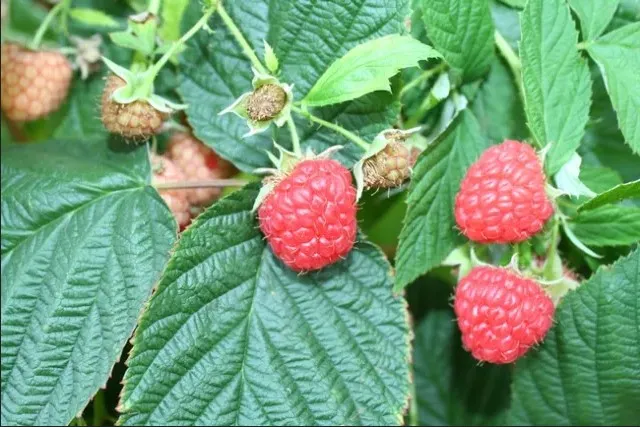
This series provides answers to selected questions recently submitted to the UC Master Gardeners of Yolo County Help Desk.
Question: I have raspberry plants that are several years old, and are not doing as well as they did in the past. They are watered daily with drip irrigation and get about 6 hours a day of sun.
Answer: Multiple factors may be at play. Since your plants are “several years old,” declining vigor could simply be due to age. Raspberries typically start to decline after five to seven years. If your plants are approaching that age, consider removing the oldest plants, amending the soil with organic matter, and replanting with vigorous new stock. Rotate planting areas if possible, and choose varieties well adapted to hot valley summers. Heritage, Polka, Fallgold (a personal favorite), Caroline and Bababerry are cultivars that should do well in our hot summers.
Your irrigation schedule may be at least part of the problem. Daily drip irrigation is too frequent, especially in the clay soils common in our area. Shallow daily watering can lead to weak root development and promote root rot. Instead, give each plant two to four gallons per week (depending on temperature and wind) divided into two or three applications. Allow the soil to partially dry out between irrigations. Check soil moisture a few inches down to guide your watering schedule.
Six hours of sun is adequate, but raspberries prefer eight hours or more for best fruit production. If nearby trees have grown over time and now shade your plants more than in years past, it could be contributing to lower yields. Having said that, raspberries do not tolerate hot weather well and will benefit from afternoon shade, especially in July and August.
Nutrient depletion is another possibility. Annual application of compost or aged manure in the spring at a rate of one-half to one pound per foot of row is beneficial. Or apply a prepared fertilizer that has a higher percentage of nitrogen than phosphorus and potassium in accordance with label directions.
Pruning practices matter too. If you are growing summer-bearing raspberries, remove only the canes that fruited, leaving new canes to grow and produce fruit the following year. If growing fall or everbearing types, cut down all canes after fall fruiting, or selectively prune off the section of cane that fruited to allow for a summer crop the next year. Overcrowding can reduce airflow and fruit size, so thin canes annually.
Finally, inspect for pests and diseases. Root rot, spider mites, aphids, or fungal diseases like cane blight can reduce vigor. Check the base of the canes for discoloration, wilting, or signs of pest activity.
For more information:
Growing Red and Yellow Raspberries in Owens Valley, Master Gardeners of Inyo-Mono Counties
Growing Cane Berries in the Sacramento Region, UC ANR
This article previously appeared in the Winters Express and Davis Enterprise.
If you have a gardening question, contact the UC Master Gardener Help Desk at 530-666-8737. Or send an email, with information regarding watering, sun exposure, details about your problem, and photos, when possible, to mgyolo@ucdavis.edu.

